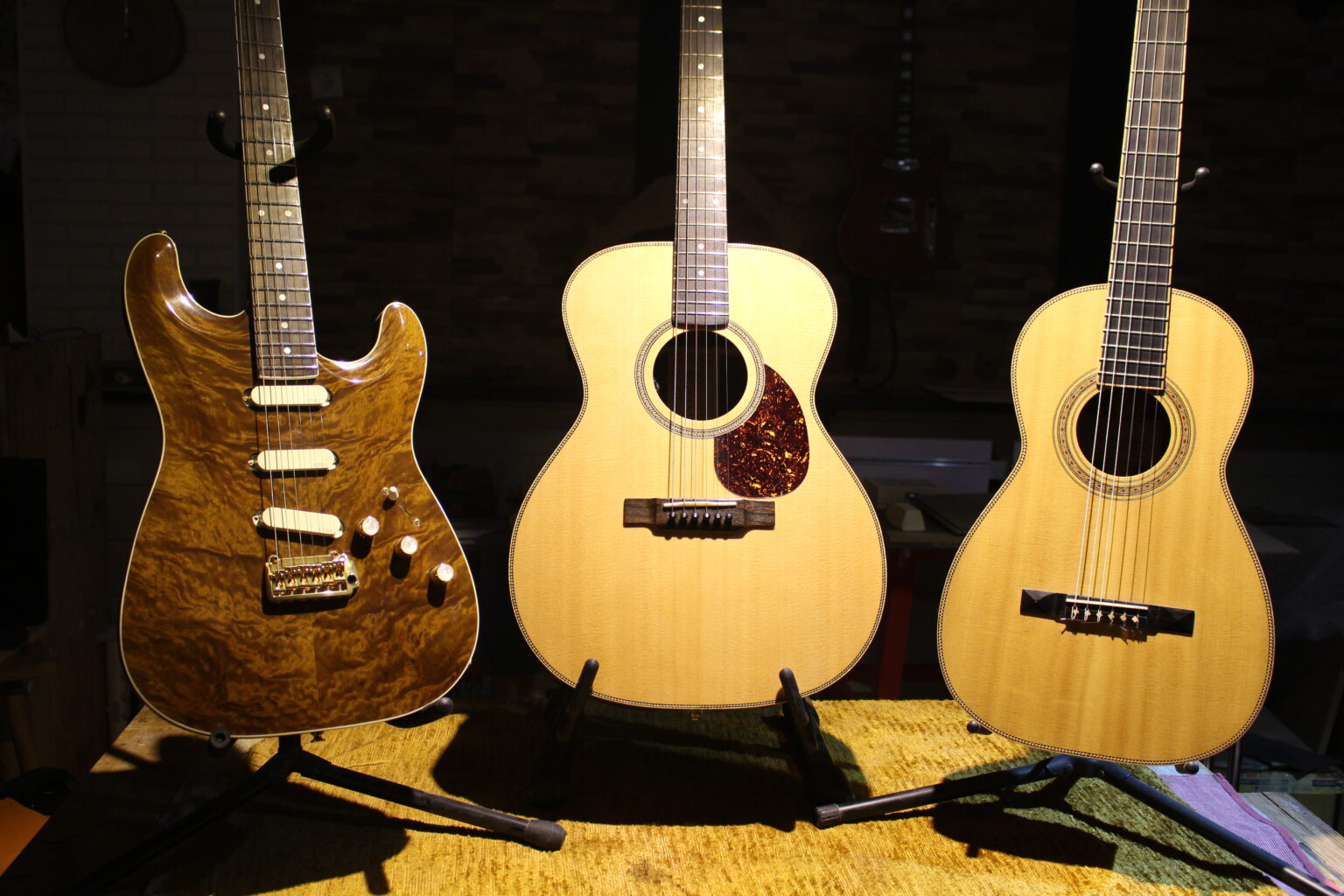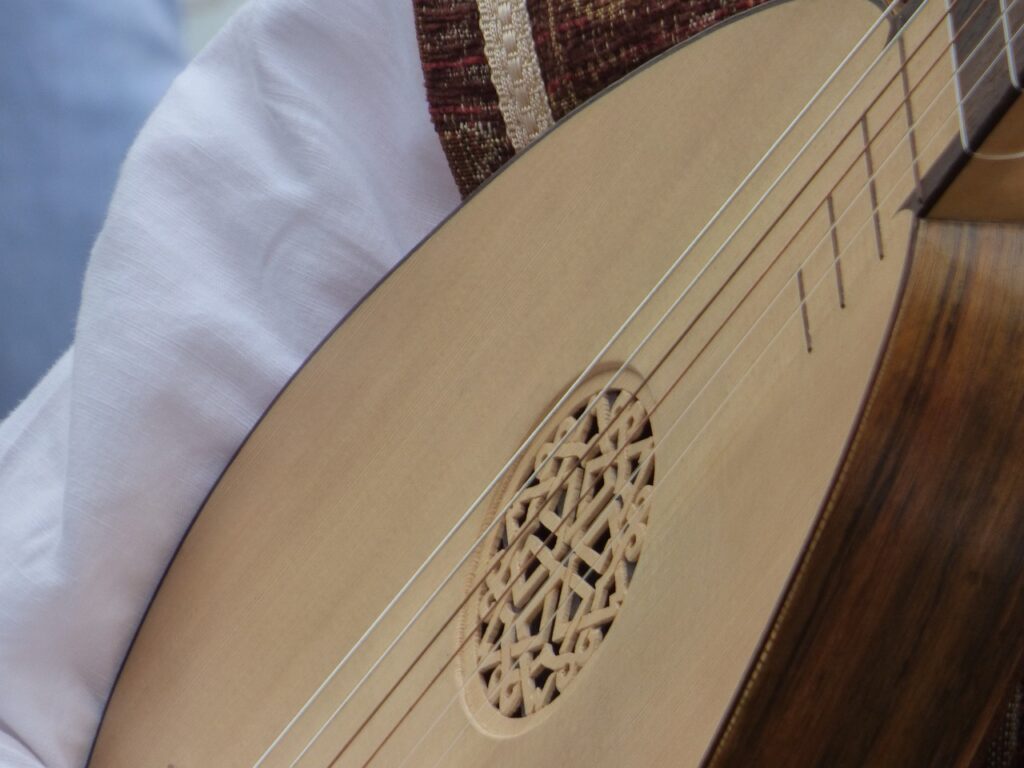
Know the history of the guitar
Even if nowadays it is one of the most universal instruments, the history of the guitar is unknown to the general public. Today we are going to summarize its origins and evolution until it became the instrument we know today, making us love it even more.
History of the guitar: origin and expansion
Ancient stringed instruments, the ancestors of the classical guitar
Before diving into the history of the guitar, we must travel back in time. Stringed instruments such as the harp, lyre or zither already existed in ancient civilizations.
Even though they are very different from the classical guitar, since they are chordophone instruments, it is understood that they are the ancestors of modern stringed instruments, they were the germ of an idea that evolved into what it is today.
The Middle Ages, the origin of the history of the guitar as we know it today
It’s during the Middle Ages when the experts place the origin of the guitar. In the Christian and Muslim kingdoms in Spain, plucked string instruments began to become more popular and later evolved into what is today the classical guitar.
In the 15th century, the guitar known as the four-string guitar triumphed among the popular classes. In the Court, the vihuela, with six or seven strings, called “double strings”. This is also when music books began to be printed, contributing to the rise of these instruments.
Implementation of the fifth string in the 16th century
In the 16th century, we have composers who wrote music for both the vihuela and the guitar, such as Alonso Mudarra and Miguel de Fuenllana contributing to the use and expansion of both instruments. Fuenllana talks in his book about the existence of a five double-stringed vihuela, whose tuning is similar to the first five strings of the current guitar, probably being the same instrument that will end up being imposed in the 17th century.
In 1596 Joan Carles Amat published a book that would soon become popular in Europe, about the five-string guitar and how to play this instrument. In fact, it’s because of this that the five-string guitar was adopted.
The importance of the transition from Renaissance and Baroque in the history of the guitar
This step forward did not only transform the art and the way of understanding the world, but also transformed the history of music. In barely twenty years, the vihuela is replaced in select circles by the guitar, being also the preferred instrument of the most popular layers of society.
There will be a proliferation of publications for guitar, where “noisy” music, that is, strummed and plucked music, alternated, such as those of Gaspar Sanz.
During the 17th century, the guitar became the common instrument in all of Europe, in both cultured environments and among popular classes. In Italy, there was a great artistic explosion around the guitar and in France, Louis XIV stated that it was his favorite instrument and surrounded himself with composers of great quality and importance.

The 18th century and the inclusion of the sixth string, milestone in the evolution of the guitar
The history of the guitar takes a new step forward when it becomes an instrument, with at first six double strings, and then six simple strings, as we know it today.
During the second half of the 18th century, there coexisted different types of guitars of five and six double strings, being this one of the most used ones in Spain, as proven by the instrument sales publications and the ones conserved. Progressively, due to the change in the repertory and the musical tastes, the simple six-string guitar was adopted. It was easier to tune and with a clearer and more adequate sound for accompaniments with arpeggios and accompanied melodies.
With this modification, the technical and acoustic conditions of the instrument stepped forwards. During the following years, new changes were made, such as the placement of the pegbox and the frets at the mouth of the guitar, as well as the reduction of the box cutouts.
History of the classical guitar in the 19th and 20th century
In the first half of the 19th century, the guitar was already an accepted and beloved concert instrument throughout Europe. Soon enough, it jumped to the USA, taken there by emigrants such as the Austrian Christian Frederick Martín and to Russia by Spanish people like Fernando Sor.
During this time, great guitar players were building and improving the instruments. There were different construction schools like Lacôte in France or Fabbricatore in Italy, among others. However, it was Antonio de Torres who, from 1850, increased the size of the guitar and added a greater number of fan-shaped struts to reinforce the top, thus giving rise to the modern Spanish guitar, which, with minimal variations, we know and use today.
The 20th century is the golden age for the classical guitar with players like Andrés Segovia, Narciso Yepes, John Williams and Julian Bream and composers like Manuel Ponce, Joaquín Rodrigo, Manuel de Falla, Leo Brouwer and Heitor Villalobos.
It is also the beginning of the history of the electric guitar, the first model of which appeared in 1935 by the hand of builder Rickenbacker and was popularized by manufacturers such as Fred Gretsch, Leo Fender and Gibson.
If you want to be a part of the history of the guitar, and you are looking for a fine instrument, you can buy luthier guitars at guitarrasfuentes.com and enjoy a piece of history in your hands.
